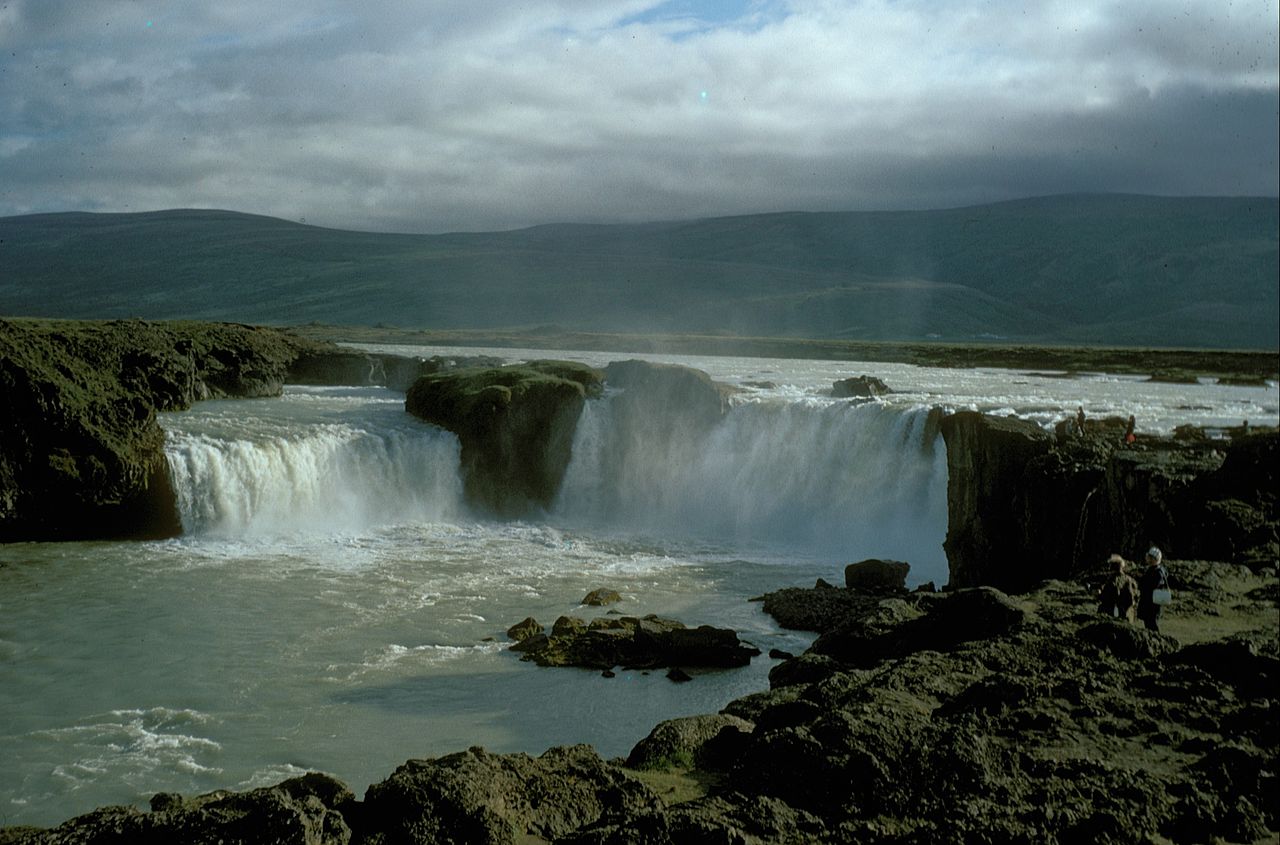
If you wonder when to travel to iceland, the first thing you should keep in mind is climate of that country. It is a type of climatology oceanic subpolar, with cool and short summers and cold winters. However, the latter are not as harsh as you might think given Iceland's location. The effects of warm gulf stream mitigate the cold.
On the other hand, its climate is responsible for the natural wonders that the Nordic country offers you, with spectacular glaciers and glacial rivers. If to these you add imposing volcanoes, you will understand that one of the main attractions of Iceland is its own nature. In any case, any time is good to visit those lands. Therefore, in addition to explaining when to travel to Iceland, we are going to suggest what to do in the country during each season of the year.
Travel to Iceland in winter
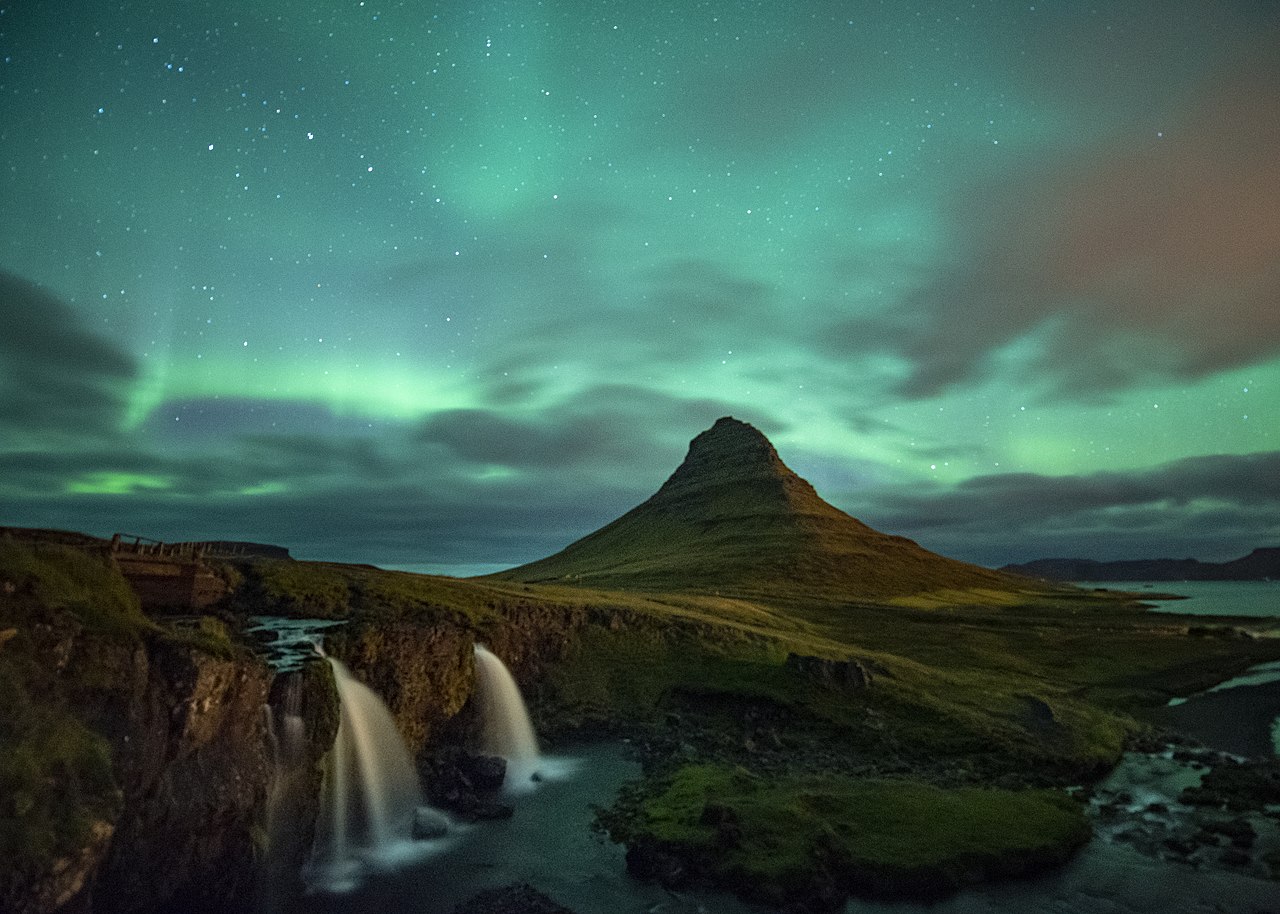
A stunning Northern Lights
If you don't mind the cold, you can visit the Nordic country in winter. As we were saying, the temperatures are not as low as in other lands with similar latitude and longitude. For example, Norway o Sweden. The reason is that its west and south coasts are bathed by the aforementioned Gulf Stream, which comes from the Caribbean, but there is another.
Iceland sits on one of the hottest spots on the planet. Has a great geothermal activity, with many volcanoes, hot springs and geysers. But, despite all this, do not expect to get rid of the cold in winter.
Reykjavik, the capital of the country, has an average temperature in the cold season of one or two degrees Celsius above zero, although it can reach negative ten. Also, the western area is isolated by snow quite easily. In any case, the Icelandic climate is highly variable. In fact, there is a phrase among the inhabitants of the country that says that if you do not like the weather, wait five minutes. Switch to.
On the other hand, winter is the best time for you to enjoy some of Iceland's main attractions. It is the case of the famous Aurora borealis. They are visible all over the island, even from Reykjavík. But there are areas of nature that are better for observing this wonderful phenomenon.
The northern lights appear in the north. Therefore, that area of Iceland is the most suitable to see them in all their splendor. Specifically, there are several places that, in addition to allowing you to see them, are truly spectacular. It is the case of the kirkjufell mountain, one of the most iconic places for tourism.
Only 463 meters high, it has a curious conical aspect and on its side there is a beautiful waterfall. If you add the northern lights to all this, you will have a dreamlike landscape ensemble. Also the surroundings Whitening cure They are perfect to contemplate this phenomenon. It is a unique rocky outcrop that bears a certain resemblance to a dragon drinking.
In short, there are many perfect places to see the Northern Lights. But we will also mention the Skardsviti lighthouse, a solitary spot where you will find yourself in full harmony with nature and you will enjoy the vision of the phenomenon like in few other places.
On the other hand, you can also take advantage of your visit to Iceland in winter to get to know the south of the island, whose climate is milder than that of the north. So you can visit the Vatnajökull Glacier, which is the largest in all of Europe; the wonderful Gullfoss waterfall, about a hundred meters wide and thirty deep; the Geysir, a huge geyser or the Plains of Thingvellir or the Parliament, which overlook spectacular lakes.
But you can also visit cities in the south such as Reykjavík itself, which we will talk about later, Kopavogur, where there is an interesting natural history museum, or Hafnarfjordur, where you can visit the church of San José, but above all attend the peculiar viking festival which is celebrated every year.
Summer, the best recommendation on when to travel to Iceland
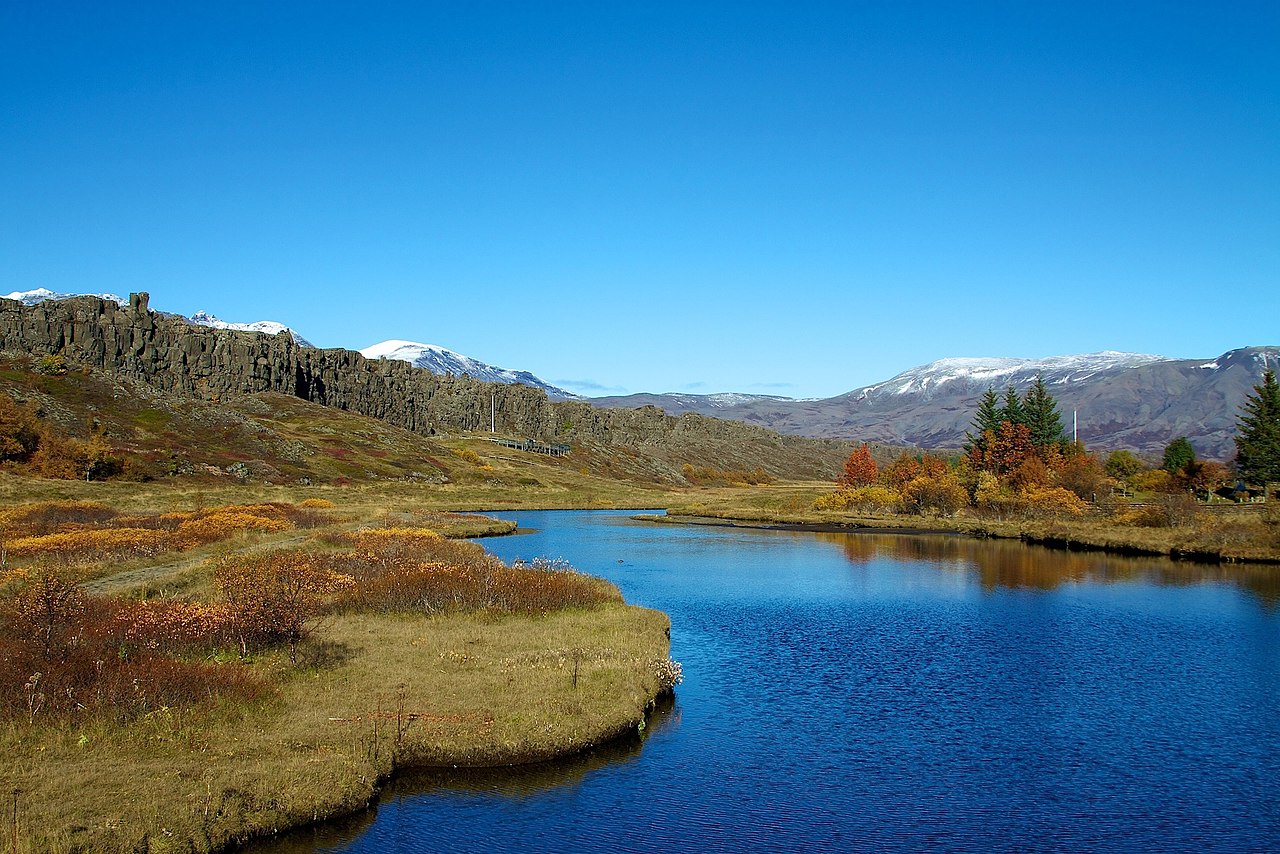
Plain of Thingvellir
Despite everything we have told you so far about when to travel to Iceland, the best time is summer. Temperatures are more pleasant, with averages around twelve degrees centigrade, although they can reach twenty-five depending on the country's areas.
You can also see the Northern Lights and also visit mountainous and northern locations that are harder to see in inclement weather. For example, the small fishing villages that preserve the most traditional features of rural Iceland.
This is the case of Husavik, considered one of the best places in the world to watch whales, which come to the bay of Skjálfandi to feed. Ornithology fans can also enjoy this town of barely two thousand inhabitants, because in the summer the puffins abound.
Another small town that deserves your visit is Siglufjordur, on the Trollaskagi peninsula, with its historic old wooden house painted in bright colors. In addition, it has a unique Museum of the Herring Era, whose fishing was the livelihood of its inhabitants until not long ago.
More important is the city of aureyri which, despite having only twenty thousand inhabitants, is considered the capital of the north of the country. It is surrounded by mountains to the west of the imposing Eyjafjour Fjord and on the shores of Glera River. It was an old Viking settlement to which today homage is paid with a statue to the god thor. You can also visit its spectacular iglesia and Botanical Garden. But, since we are talking about Icelandic cities, it is time to explain what to see in Reykjavík, the capital of the country.
Reykjavik, at any time of the year
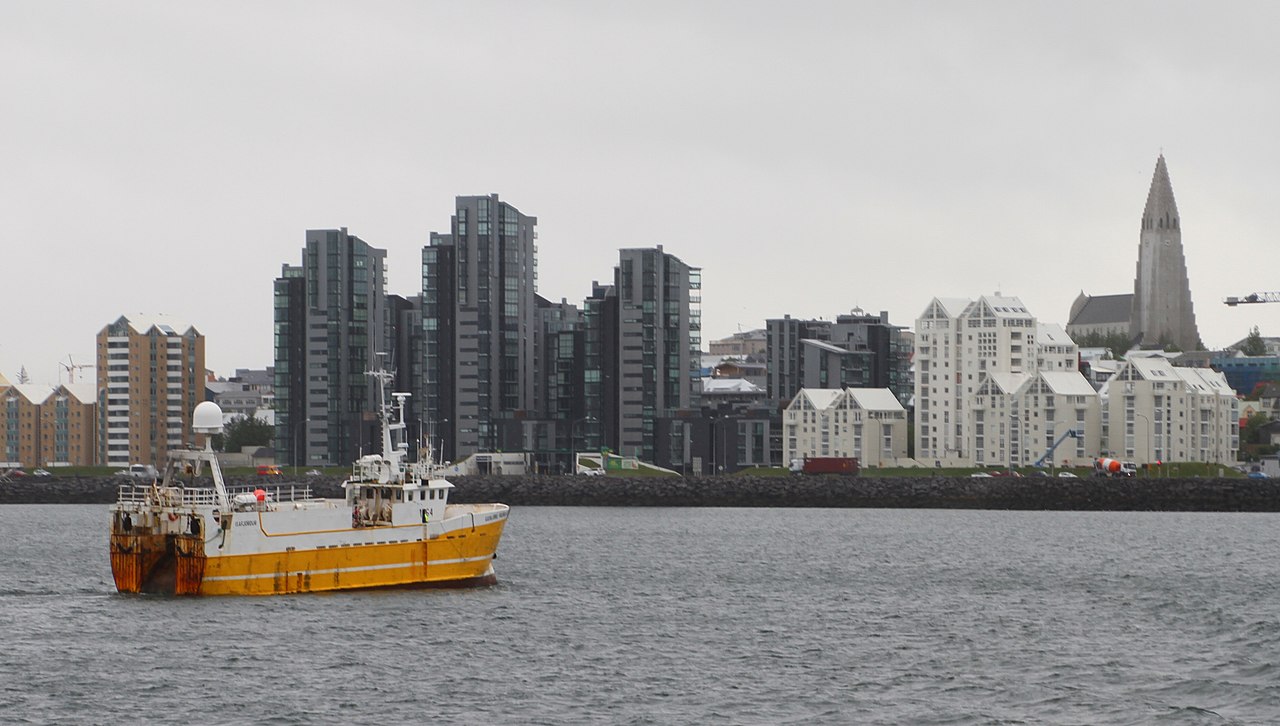
View of Reykjavik
Because the main Icelandic city can be visited at any time. But, if you want to see all its monuments, it is always better to go in the summer, when the temperatures help you spend more time in the streets. With less than two hundred thousand inhabitants, it has a lot to offer you.
You can start your tour of the buildings of the Parliament and the government house, both from the XNUMXth century. Very close to these, in the same district of Miöborg, are the Library and National Theatre. You should also visit the National Museum of Iceland and nordic house, architect's work Alvar Aalto.
But, if you want to know the most traditional Reykjavík, in addition to the old town, you have to visit the Arbaer Folk Museum, where you can see an entire small town rebuilt in the purest original style. Finally, as for the religious monuments of the city, we advise you to see the Old Cathedral, from the XNUMXth century, and the Reykjavik Free Church. But, above all, the impressive Hallgrímskirkja or new cathedral, an impressive building in front of which you will see a statue of Erik the RedXNUMXth-century Norwegian sailor and adventurer who discovered Iceland. However, the city also has a beautiful Catholic cathedral, that of Christ the King.
Travel to Iceland in spring or autumn
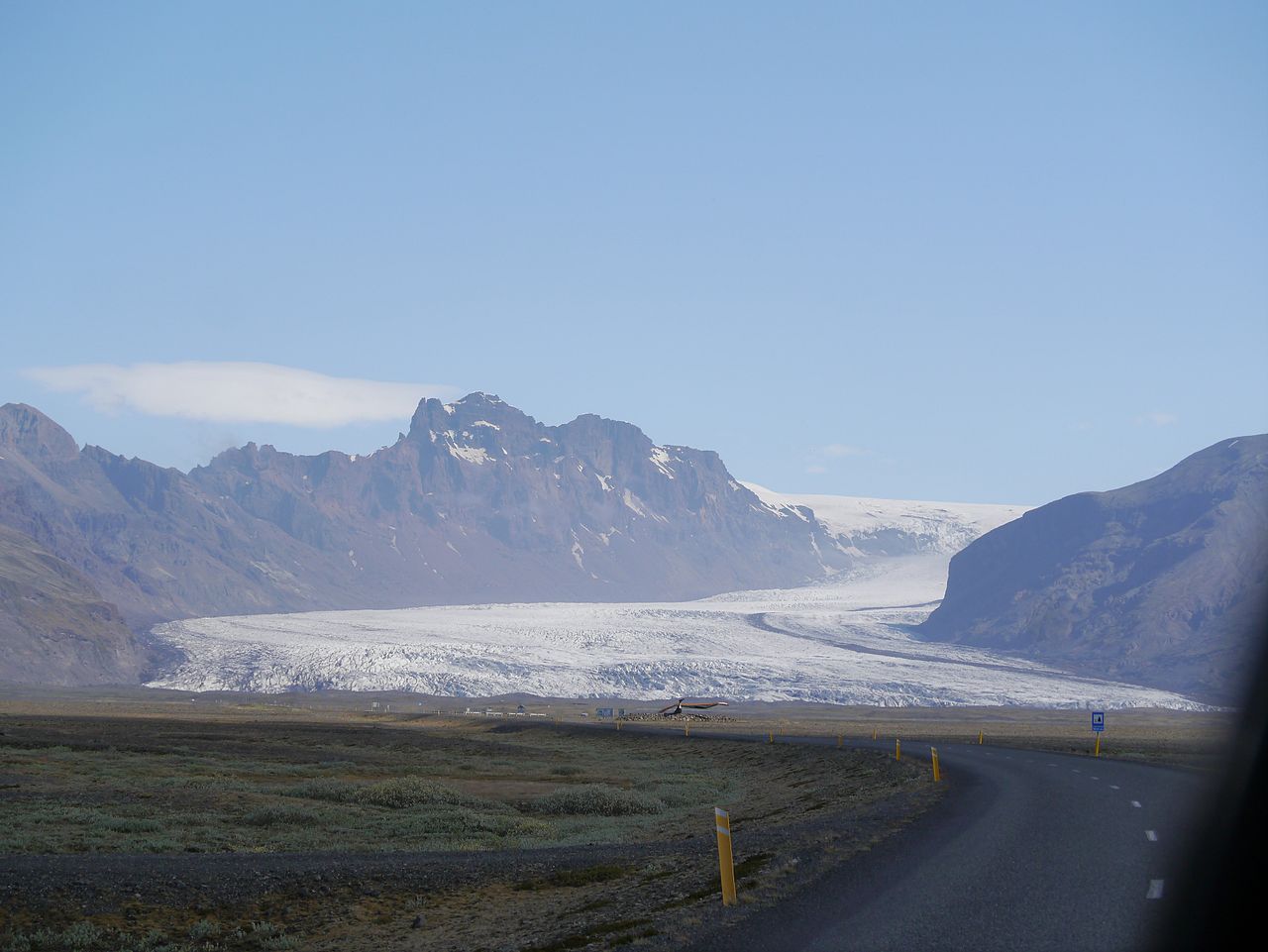
Another spectacular Icelandic landscape, in this case the Vatnajokull area in winter
Regarding when to travel to Iceland, even these two seasons are good to advise you. In fact, being the least touristic, prices are cheaper and in both one and the other you can also see the coveted northern lights. As if that were not enough, autumn offers you a natural spectacle of colors in the mountains and plains with the mixture of plants, mosses and lava remains.
The temperatures are very similar in both seasons, since they vary between zero and ten degrees centigrade. It is true that their dates do not coincide exactly with ours. Autumn in Iceland begins in late August and ends in early November. Its only drawback is that it is a windy season, which can make your excursions difficult. You should also keep in mind that there are activities that end at this time. For example, him Rafting in the rivers or excursions to the highest lands.
For its part, the Icelandic spring extends between April and May. Although the natives of the country celebrate the first day of summer on April 18, do not be fooled. Rather it is the beginning of spring. On the other hand, there may be occasional snowfall, but it is rare. Instead, it is the time when migratory birds begin to be seen. As a curiosity, we will tell you that the European golden plover is considered to bring spring to Iceland. However, the most popular species arriving in the country is the puffin, which we have already told you about.
In conclusion, we hope we have answered your question when to go to iceland. As we said, the best time is summer. But also spring and autumn bring you pleasant temperatures. Even winter is a good time to visit the Nordic island. Because it is the best to observe the precious Aurora borealis. Also, the trip and stay are cheaper and, if you like snowy landscapes, it is the best time to appreciate the beauty of its glaciers and fjords, who have nothing to envy those from norway. Therefore, visit Iceland whenever you want, but do not stop doing it. Don't you think the ones we've given you are reason enough to go?